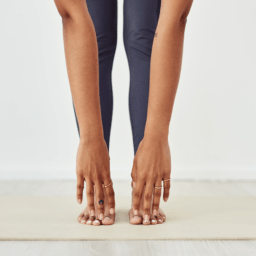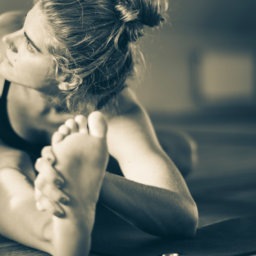
Tight muscles can limit your range of motion, slow your speed and cause injuries to joints and muscles. Nobody wants to stop training to take time to heal. Keep reading to learn what types of stretches you should include in your workout, and when should you do them.
Passive or static stretching
Passive stretches are designed to be moved into gently and held without bouncing or pushing, like bending at the waist to touch your toes. This form of stretching was once commonly done before a workout, but we now know that static stretching cold muscles before a workout actually increases your risk of injury. Passive or static stretches still have their place, though, and can lengthen muscle tissue when you do them during your cool-down after a workout.
Active or dynamic stretching
Active stretches are the safer alternative before a workout. Moving while stretching muscles—doing jumping jacks or clockwork lunges, for instance—can help you achieve greater flexibility than through passive stretching alone. Active or dynamic stretching helps to warm up your muscles before a workout, increasing blood flow while lengthening the muscles you’re about to exercise. The activity involved in dynamic stretches limbers muscle tissues up while giving you better body awareness before you take to the track or jump into a pick-up basketball game.
Warm up and cool down properly
Stretching cold muscles can lead to injuries, so give yourself a five or ten-minute warm-up before starting your workout with some dynamic stretches. If you leave the office and head to the gym, consider walking part of the way to warm up your body prior to active stretching and your gym work.
After a workout, it’s important to cool down and gradually let your heart return to its normal rate. Increase your range of motion through passive stretches while your muscles are limbered up after exercise. Focus your stretches on the muscles you just worked out. For instance, if you just ran five miles, perform calf, hamstring and quad passive stretches.
Choose the right stretch and stretch right
Remember when stretching after a workout to use passive stretches that focus on stretching along the length of the muscle. Inhale as you move gently into the position, then hold the pose for 30 seconds to a minute without bouncing. Keep your awareness in the muscle area you extend, and move only until you feel a comfortable stretch, never to the point of pain. Exhale as you hold the position, and you may find your muscles lengthening.
Another ideal time to stretch is right before bedtime. Research shows that stretching, even for 10 minutes a day, can aid relaxation and help you calm your nervous system after a workout. Simple yoga positions like downward dog and child pose can help you relax so you can get a good night’s rest to recover for your workout tomorrow.
It’s important to stretch carefully. If you have a sore muscle, work gently. Don’t stretch a strained muscle because you could damage it further and slow the healing process. Now that you know the right way to stretch, add a new dimension to your workout with dynamic and static stretches. You can find yourself extending your range of motion, increasing your comfort and reducing your chance of injuries. Start stretching now to keep your fitness program on track for the long run.
Looking for more training tips? Check out How to Use Kettlebells to Enhance Your Workout.















